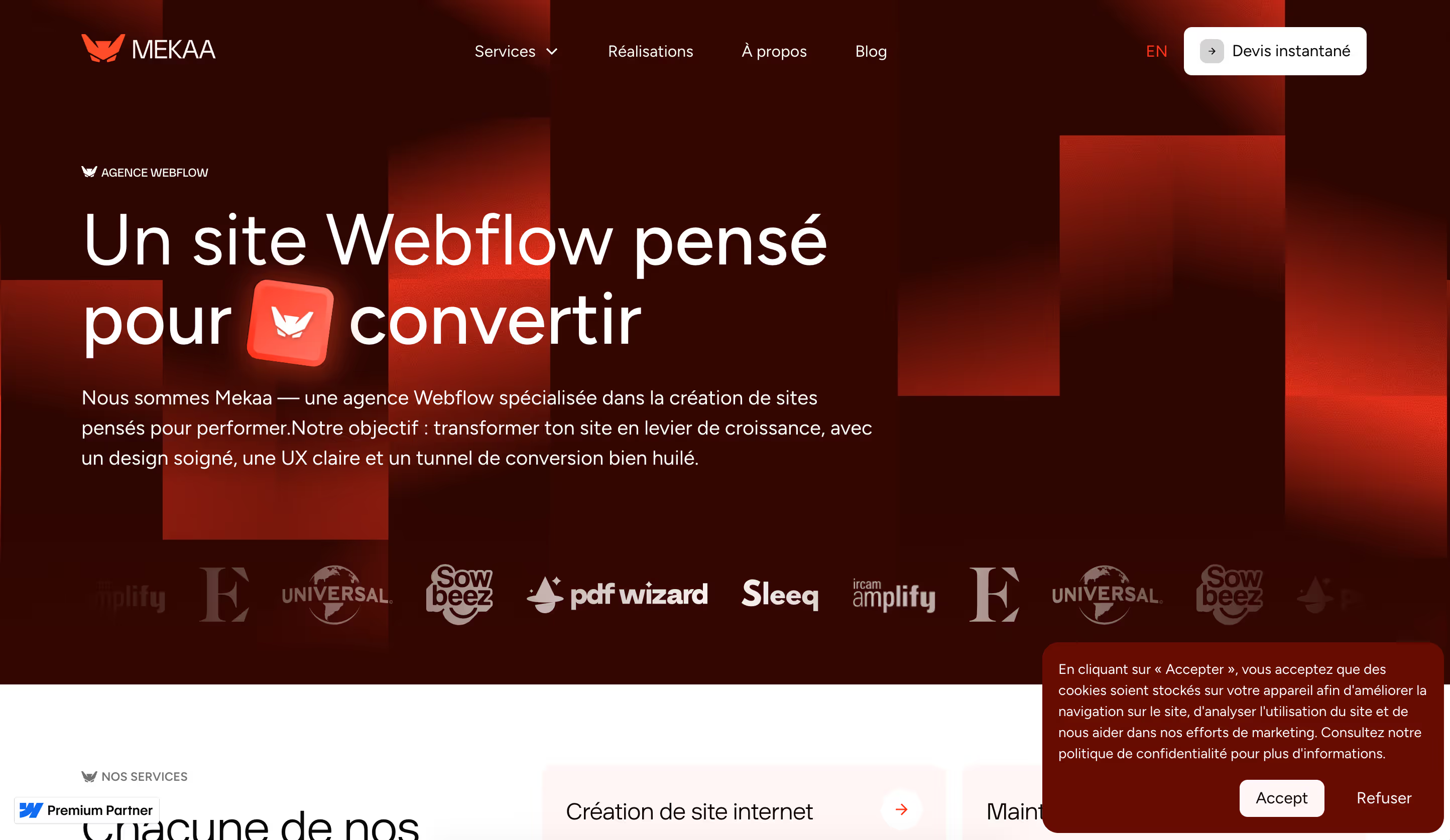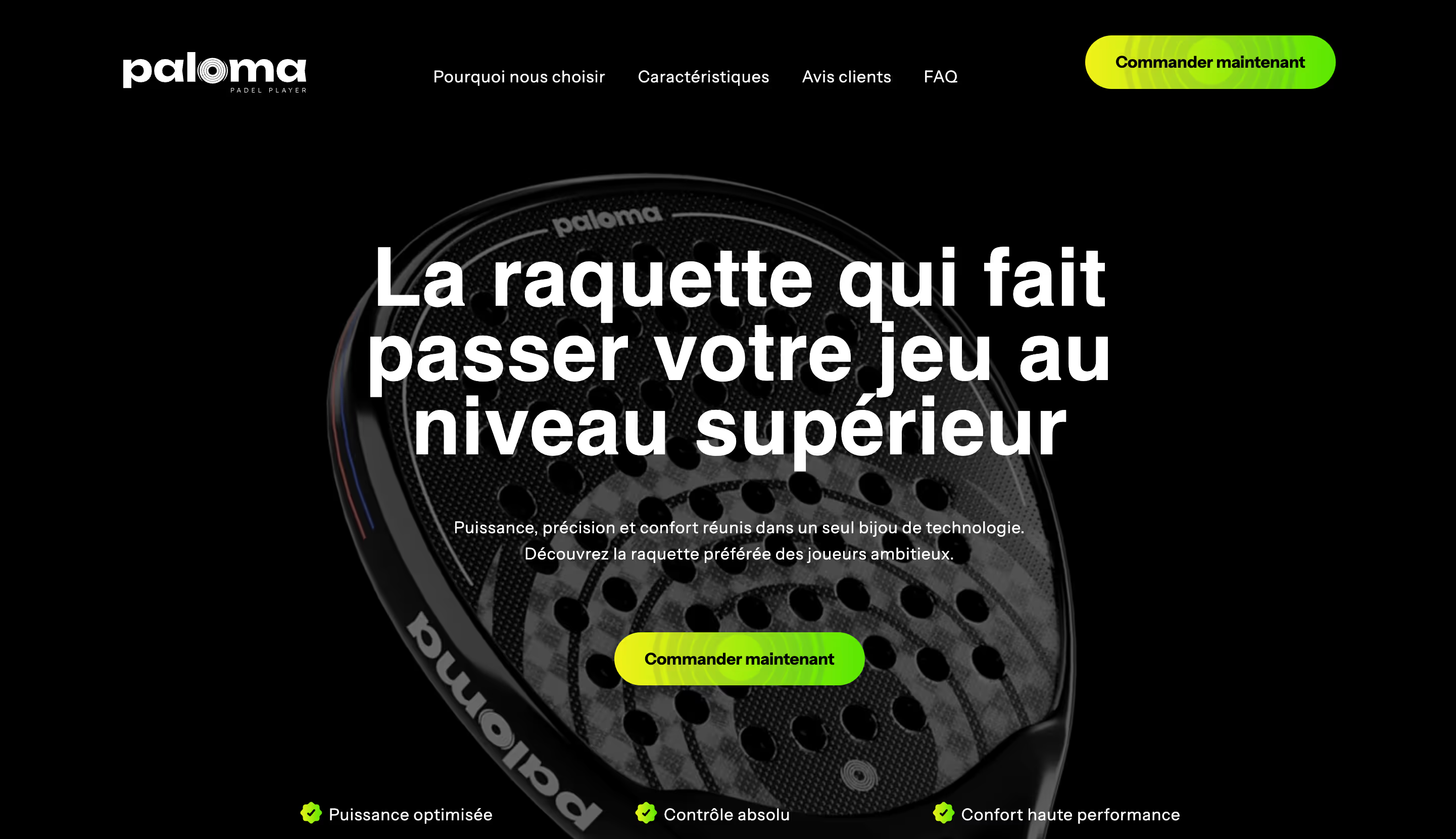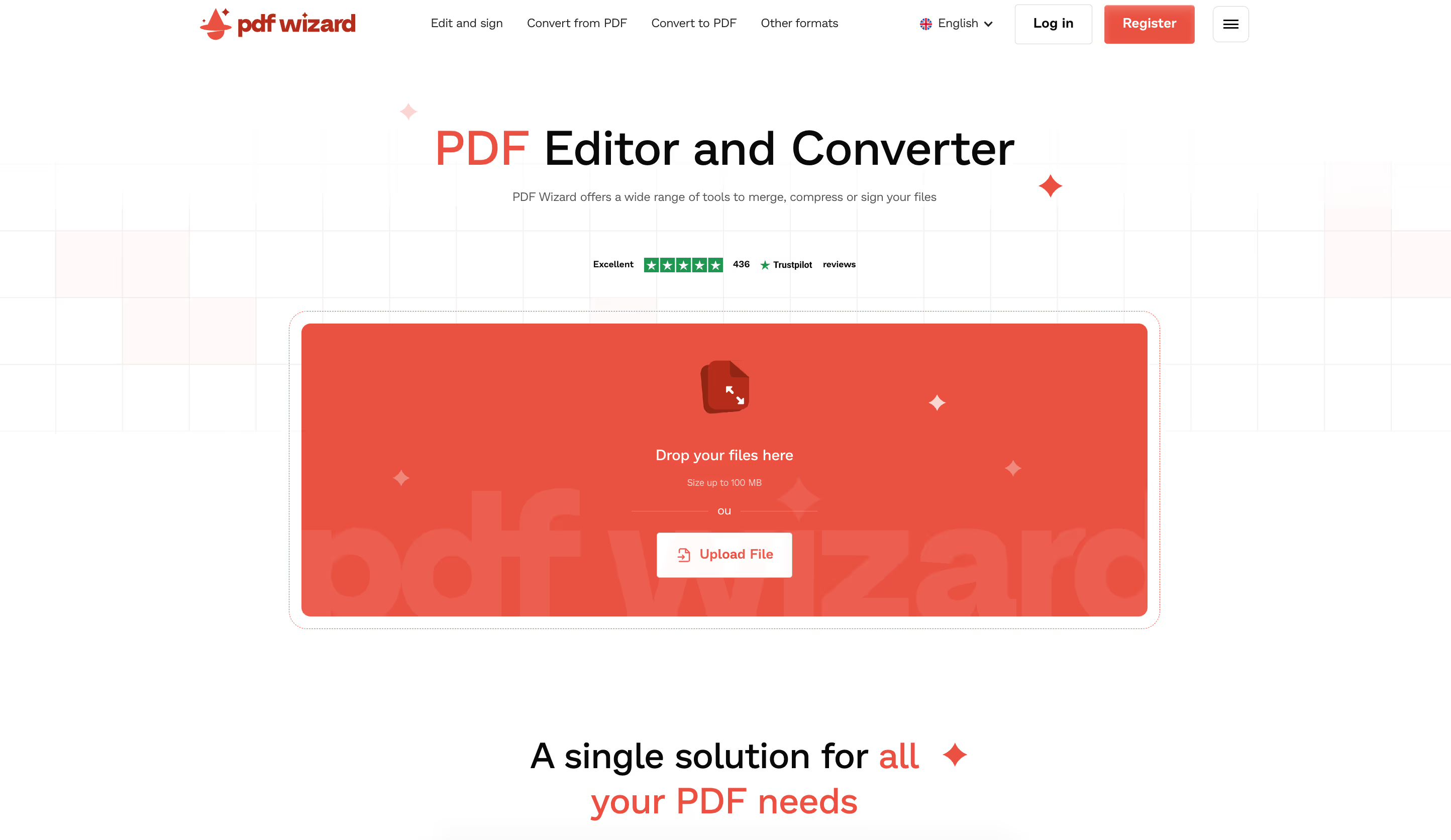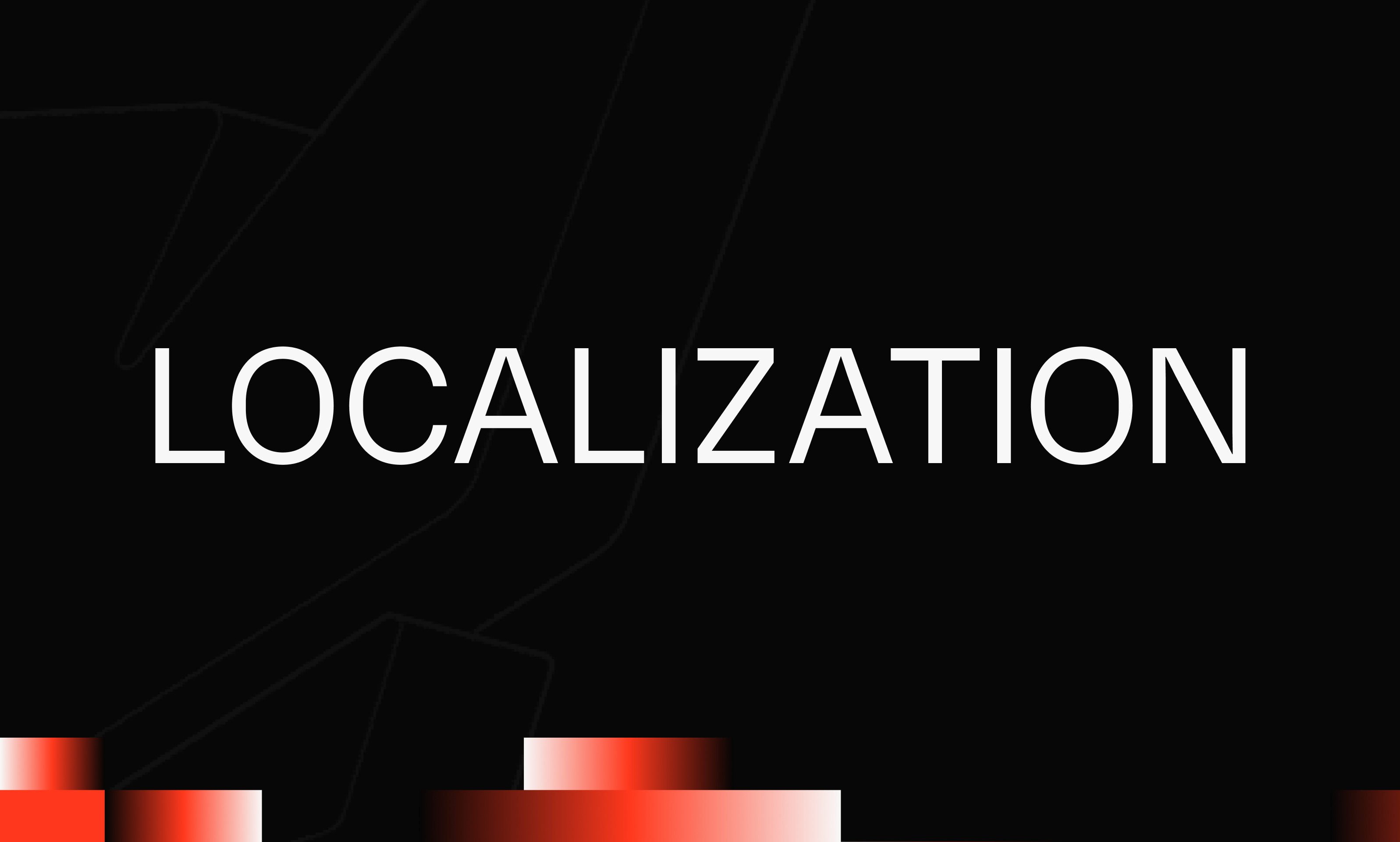Understanding the different types of websites is essential for any business or individual who wants to create an effective online presence. This comprehensive guide introduces you to the main types of websites available, their specific characteristics, and practical applications. Whether you are an entrepreneur, professional or simply curious about the web, this article will help you determine what type of site best suits your needs and goals.
Our Webflow agency assists companies in choosing and creating the type of site most suited to their digital strategy.
What is a website and why is it important to know the different types?
A website represents a set of interconnected web pages, accessible via a unique URL address. In today's digital landscape, understanding the different types of websites is a major challenge for businesses and individuals. Each type of website meets specific objectives and is aimed at specific audiences.
The diversity of website types reflects the changing needs of users and businesses. Some sites focus on presenting information, while others promote online interaction or commerce. This variety offers website builders numerous possibilities to achieve their goals.
Recognizing the different types of websites allows you to better orient your digital strategy. Whether it is for a company seeking to develop its online presence or for an individual wishing to share its passion, choosing the right type of website largely determines the success of the project.
The showcase site: the digital business card for businesses
The showcase site represents the most common type of website in the professional world. The main function of a showcase site is to present a company, its services and its products in an attractive and professional manner. Unlike an e-commerce site, it does not generally offer direct online sales features.
The creation of a showcase site requires particular attention to brand image and user experience. These websites must effectively convey the values of the company while providing all the essential information to visitors. A well-designed showcase site generally includes company contact information, a presentation of services, and sometimes a portfolio of achievements.
Showcase sites are particularly appreciated by service professionals, artisans and small local businesses. They are an indispensable tool for businesses that want to establish their credibility online without investing in a complex e-commerce solution. The simplicity of a showcase site also facilitates its maintenance and regular updating.

What are the different types of e-commerce sites and their specificities?
The e-commerce site is a major category among the various types of websites dedicated to online sales. An e-commerce site allows businesses to market their products or services directly via the internet, offering customers the possibility of making purchases in a few clicks.
Online sales sites come in several variants depending on the economic model adopted. In particular, a distinction is made between online shops traditional, marketplaces, auction sites and service platforms. Each type of e-commerce site meets specific needs and addresses particular market segments.
Creating an e-commerce site requires the integration of advanced functionalities such as inventory management, secure payment systems, and order tracking tools. These websites must also comply with strict data protection and e-commerce regulations. Users can thus make their purchases safely while benefiting from an optimized shopping experience.

Blogs: what type of website to share content?
Blogs are a type of website that is particularly suited to the regular sharing of content. A blog is a website that allows you to publish chronological articles on various topics, promoting interaction with readers through comments.
This type of website is characterized by its ease of updating and its reverse chronological structure, where the most recent articles appear first. Blogs are a great way for businesses to improve their natural referencing and to establish their expertise in their field of activity.
Creating a blog requires a well-defined content strategy and regular publishing to keep users engaged. These websites also allow the integration of social functionalities, facilitating the sharing of articles on social networks. Search engines generally favor blogs that offer quality and regularly updated content.

Institutional site and corporate site: what are the differences?
The institutional site represents a type of website specifically designed for public organizations, associations and institutions. The main mission of these websites is to inform the public about the missions, services and news of the organization they represent.
A corporate site, on the other hand, is mainly aimed at large companies wishing to present their structure, governance and activities to their stakeholders. These types of websites focus on transparency, financial communication, and investor relationships.
Both types of sites share some common characteristics, including the importance given to credibility and the transmission of official information. However, the corporate site generally integrates more sophisticated functionalities to meet the communication requirements of large companies. Users of these sites are primarily looking for reliable and up-to-date information about the organization.
{{banner}}
Web applications: a type of interactive website
A web application represents a particularly sophisticated type of website that offers functionalities comparable to those of traditional software. Unlike static websites, web applications allow users to perform complex tasks directly in their browser.
Developing a web application requires advanced technical skills and the use of modern web technologies. These websites offer a rich and interactive user experience, allowing data manipulation, real-time collaboration, and the execution of complex business processes.
Web applications find their application in many areas, from business management tools to collaborative platforms. They have the advantage of being accessible from any device connected to the Internet, without requiring any particular installation. This flexibility makes it a preferred choice for businesses looking to modernize their internal processes.

Collaborative site and community site: promoting interaction
A collaborative site is a type of website designed to facilitate teamwork and the sharing of resources. These websites allow several users to collaborate on common projects, share documents and communicate effectively.
A community site, on the other hand, aims to bring together people sharing common interests around an exchange platform. These types of websites generally incorporate advanced social features such as forums, discussion groups, and messaging systems.
The creation of these sites requires particular attention to the user experience and interaction features. This allows users to exchange ideas, share experiences, and build a genuine online community. These platforms are a great way for businesses to build customer loyalty and create a sense of belonging.
Forums: what type of site for online discussions?
Forums are a type of website specially designed to facilitate thematic discussions between users. These websites are generally organized around categories and topics of discussion, allowing members to ask questions, share experiences, and discuss topics of common interest.
The hierarchical structure of the forums makes it easy to navigate and find specific information. Users can create new discussion topics and reply to existing messages, creating rich and documented conversation threads. This organization promotes the emergence of an active and committed community.
Forums are a valuable tool for businesses that want to create a space for their customers to help each other. They also make it possible to gather opinions on products and services, while offering participatory customer support. The moderation of these discussion spaces remains essential to maintain a climate of respect and quality of exchanges.
Portfolio site: how to effectively present your achievements?
A portfolio site represents a type of website specially designed to highlight the professional achievements of an individual or a company. These websites are a visual presentation tool that is particularly suited to creative and artistic professions.
The design of your portfolio site requires particular attention to aesthetics and navigation. Visitors should be able to easily discover the various projects presented and quickly understand the skills and expertise of the site owner. Organizing content by categories or chronology facilitates this discovery.
This type of website is particularly effective for photographers, designers, architects, developers, and other creative professionals. It makes it possible to demonstrate skills and work style in a concrete way, much more effectively than a simple traditional resume. The integration of detailed case studies reinforces the credibility and impact of the portfolio.
Intranet site: a type of website for internal communication
An intranet site is a type of website intended exclusively for internal use within an organization. These private websites allow employees to access information, resources, and tools specific to their business in a secure and controlled environment.
Setting up an intranet site considerably improves internal communication and team productivity. Employees can review company news, access shared documents, use business applications, and collaborate more effectively. This centralization of resources simplifies internal processes.
The functionalities of an intranet site vary according to the needs of the organization, but generally include an internal directory, collaborative workspaces, document management systems, and communication tools. Security and access rights management are crucial aspects of this type of platform.
{{banner}}
How to choose the right type of website for your project?
Choosing the right type of website for your project requires a thorough analysis of your goals, target audience, and available resources. The first step is to clearly define the main purpose of your website: to inform, sell, entertain, or facilitate interactions.
Analyzing your audience is also a determining factor in choosing the type of website. The expectations and behaviors of your visitors directly influence the functionalities required and the design approach to adopt. A site intended for professionals will not have the same requirements as a general public site.
Budgetary and technical constraints must also be taken into account when selecting the type of website. Some projects require significant investments in development and maintenance, while others can be carried out with simpler and more economical solutions. A web agency can support you in this strategic thinking.
Mobile site and responsive site: adapting to new uses
A mobile site represents a version that is specifically optimized for mobile devices, offering a user experience adapted to small screens. This type of website takes into account the specificities of tactile navigation and the bandwidth constraints of mobile connections.
The responsive site, on the other hand, uses a different technical approach by automatically adapting to all types of screens. This unique solution makes it possible to offer an optimal experience on computers, tablets and smartphones without the need for separate development. The flexibility of responsive design makes it the preferred solution today.
The importance of mobile in current uses makes it essential to optimize all types of websites for these devices. Search engines now favor mobile-optimized sites, and users are quickly abandoning sites that don't display properly on their smartphones. This trend is profoundly influencing modern website design.
The diversity of the different types of websites offers numerous possibilities to create an online presence adapted to each need. Whether you opt for a showcase site, an e-commerce site, an e-commerce site, a blog or a web application, the success of your project will depend on the relevance of your choice in relation to your goals. Understanding the specificities of each type of website will allow you to make informed decisions and maximize the impact of your digital presence. Do not hesitate to use the services of a specialized web agency to assist you in creating a website that will perfectly meet your expectations and those of your users.



